Bringing a puppy home is fun, exciting, and a lot of responsibility. Most puppy parents know they need to “socialize” a puppy to help them become a valued member of a family. Your dog’s brain is actually most capable of processing and accepting new experiences between 3 and 14 weeks old. This timeframe is commonly called the puppy socialization period, during which you should aim to expose your puppy to as many different experiences as possible. Socialization can benefit dogs of any age, but it’s especially important for puppies. That’s because dogs who miss out on a wide range of positive experiences during the puppy socialization period tend to be more anxious throughout their lives.
A well-socialized puppy creates a behaved, relaxed, safer dog. If your puppy is comfortable in a wider variety of situations, they’re less likely to use aggression in moments of fear. Not socializing your puppy can lead to dangerous situations in the future. According to the American Veterinary Society of Animal Behavior, the number one cause of death for dogs under three is behavioral issues, not infectious diseases.
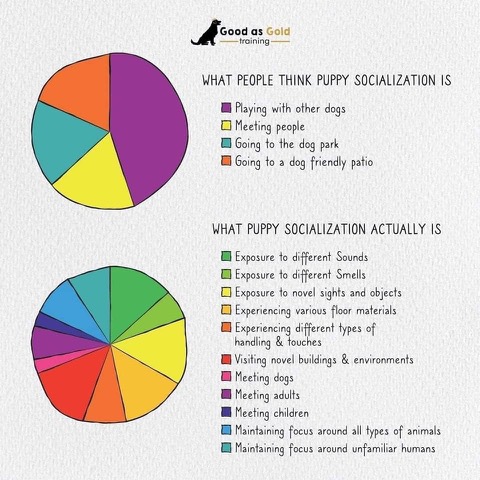
Many pet parents think that “puppy socialization” means introducing your puppy to other dogs, taking him to the dog park, walking her around the neighborhood, and maybe sitting with you on a restaurant patio where there are other people. Honestly, there’s a lot more to it than that.
Socialization means introducing your puppy to the whole wide world. They need to experience different types of people, places, senses, creatures, and objects they’ve never seen before. A variety of exposures is key to proper and successful socialization. Yes, introduce your puppy to all types of other dogs and puppies, starting in controlled spaces with dogs you know. Later, he may be ready for the dog park. Equally important, your puppy needs to meet people of all ages, genders, sizes, and races. Give your pup wide experiences with sights and places (such as town, neighborhood, stores, and the great outdoors), smells, sounds, and textures (like different flooring types, gravel, pavement, and grass). Walk your puppy in and out of buildings, rooms, fences, and vehicles. Different types of touches are part of proper socialization and will make visits to the groomer or vet less frightening.
When socializing your puppy, take it slow and be aware of your puppy’s limits. Make the interactions positive and give plenty of treats and praise. Everything is new to your puppy, so every encounter is an opportunity to make a positive association. Your role is the leader. Keeping the puppy’s focus and attention will serve to build his confidence in unfamiliar situations. The key to successful socialization is more predictable reactions when encountering unfamiliar sights, sounds, textures, smells, places, animals, or people.
If you need help with puppy socialization, reach out to a trained expert who might offer puppy socialization classes or guidance.

Bear is just one of the puppies who will be available in the coming days and weeks at Second Chance.
Second Chance Humane Society’s Animal Resource Center and Thrift Shops have served San Miguel, Ouray & Montrose Counties since 1994. Adoption hours are Wednesday through Sunday from 11 am to 5:30 pm. Our Community Veterinary Services are available by appointment. View our shelter pets and services online: www.secondchancehumane.org



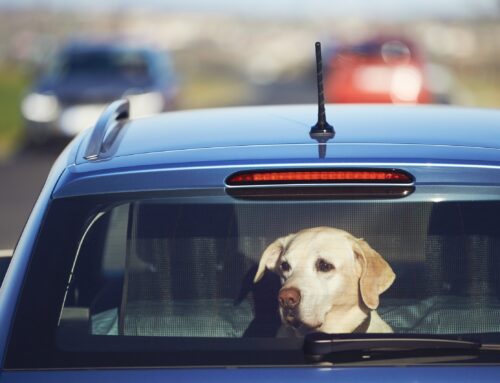
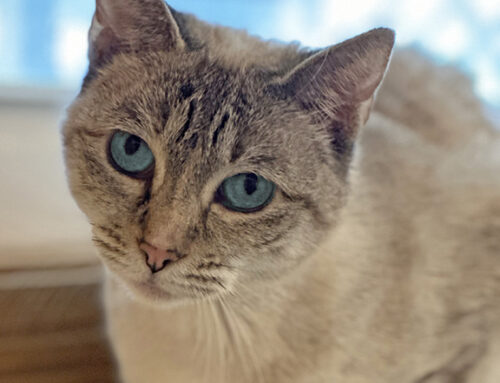
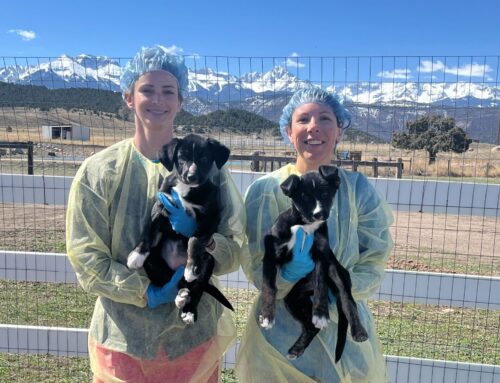
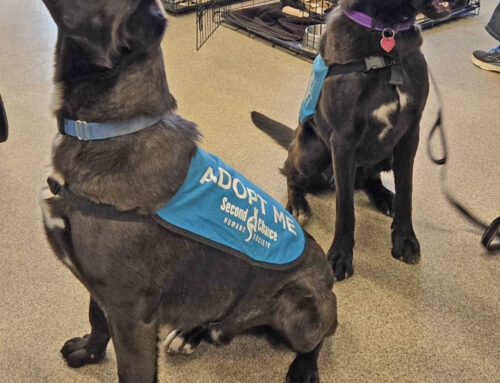

Leave A Comment